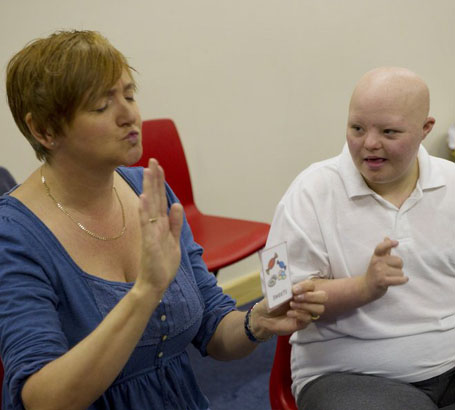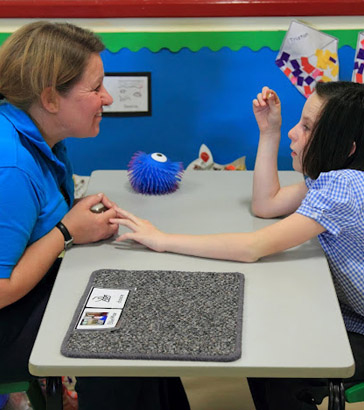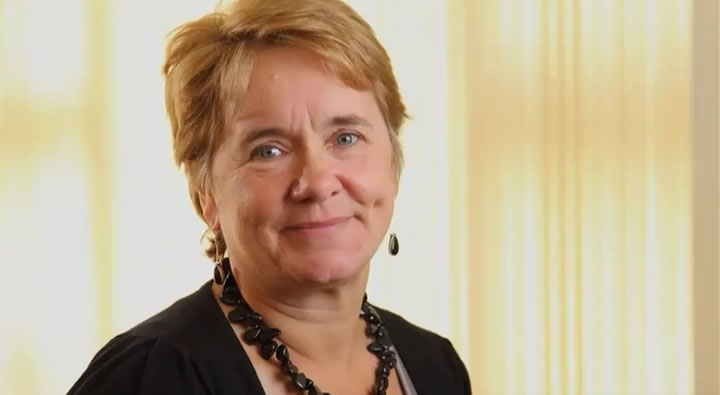
- Communication is not just functional, it is also about being part of a social world.
- It is a big developmental leap to move from simply using words to taking part in conversations.
- Conversation can be practised in one-to-one and peer group settings.
Notice how social questioning is promoted in this structured session.
Harris and Wimpory (1991) categorised the elements of conversation as follows:
Easy
- Imitating.
- Responding.
- Initiating.
- Talking about one's own interests.
- Asking simple questions (using intonation).
- Combining gesture and speech.
Hard
- Monitoring how much the
other understands.
- Responding to correct misunderstanding.
- Changing communication modes.
- Providing cues for the listener.
- Combining responding and initiating.
- Talking about others' interests.
- Responding to questions.
- Making sense of speech without cues.
- Using speech with no cues.
For a child with learning difficulties to engage in conversation, a sensitive, responsive partner is needed.

Children will become confident communicators when their communication partners enable them to:
- Feel able to make mistakes – be tentative and able to think aloud without being judged;
- Use their own language – so that their ways of talking are respected;
- Offer their own opinions and take them seriously; and
- Take part in social conversations, rather than just communication for functional purposes.
Listen to this clip in which a headteacher of a special school talks about her school's approach to communication. Note especially what she says at the end about the importance of involving the wider community.
In this clip, a group of girls with SLD/PMLD/CLDD take part in a social communication session.
What strategies does the adult use to enable the girls to converse?
Answers
Your answer may have included the following:
- An opportunity for social exchange.
- A group leader who knows the group well, knows what they are interested in and listens to them.
- A small supportive group where children feel confident to speak.
- Speech supported with signs and symbols.
- Encouragement to talk to each other, not just to the adult leading the group.
- Additional adult support for those who need it.
- The correct form of communication for each child, primed with relevant vocabulary/phrases.
- Time to respond and, for Lauren, prior knowledge of the topic to be discussed so that she can prepare.
Return

Social conversation often involves the telling of stories and personal anecdotes.
Through stories and anecdotes speakers:
- Draw listeners in;
- Present their views;
- Make value judgements on what has occurred; and
- Invite a response.
Children with expressive difficulties have personal stories too. They need to be encouraged and enabled to share these. Communication partners need to support children to tell their stories without hijacking the process.

The following diagram, based on Harris and Wimpory (1991), shows helpful and unhelpful behaviour by conversation partners.
Observe a colleague's classroom.
Do children's communication partners enable
them to:
- Feel able to make mistakes;
- Use their own language;
- Offer their own opinions; and
- Take part in social conversations, rather than just communication for functional purposes?
Discuss your observations with your colleague and suggest any areas where practice might be improved.
Invite your colleague to carry out a similar exercise with your class.
Are there areas of practice that need to be addressed across the school?
Make an action plan and discuss with colleagues how it might be implemented.
Evaluate the changes you make in terms of improvements in opportunities for communication.

Harris, J., Wimpory, D. (1991). BIMH Workshop Modules 'Get Kids Talking.' First Draft Publications. BIMH British Institute of Mental Handicap.


